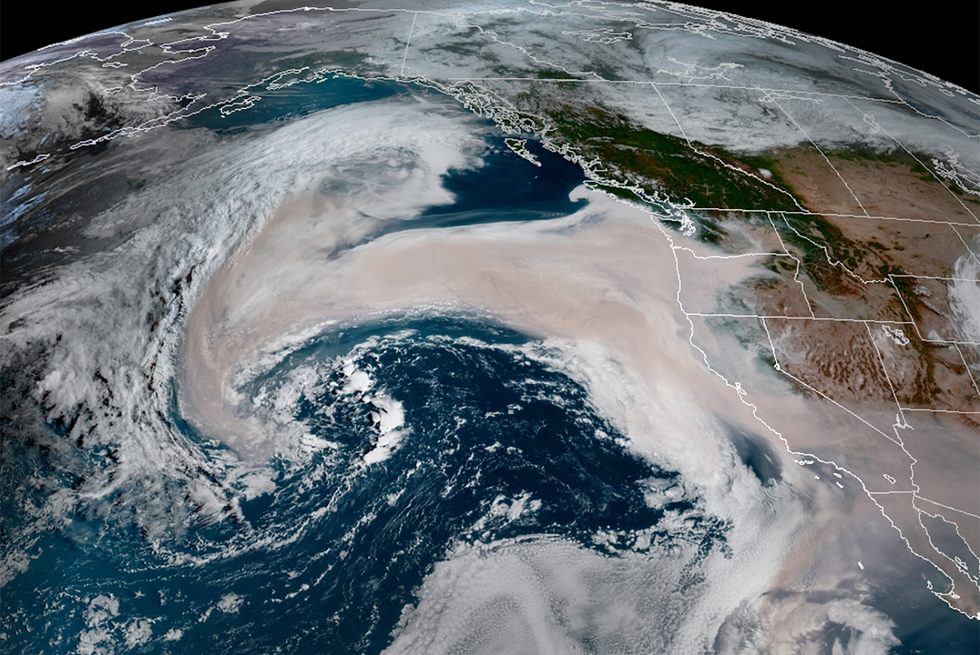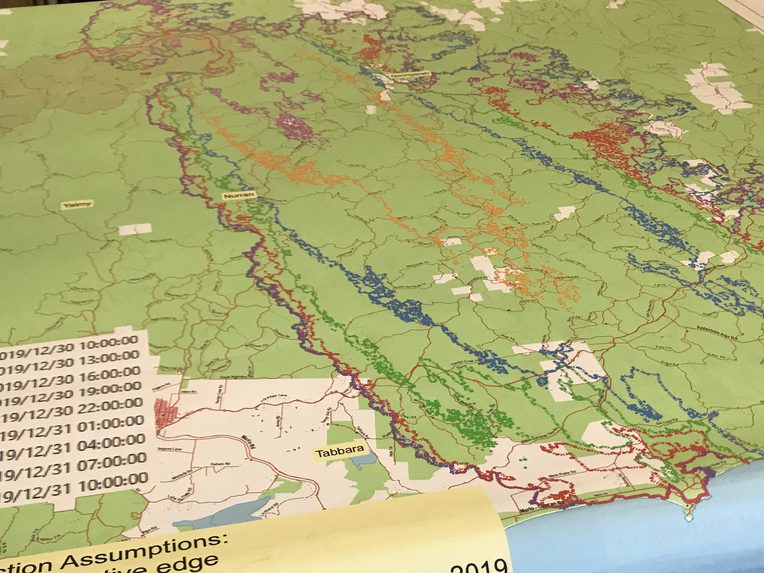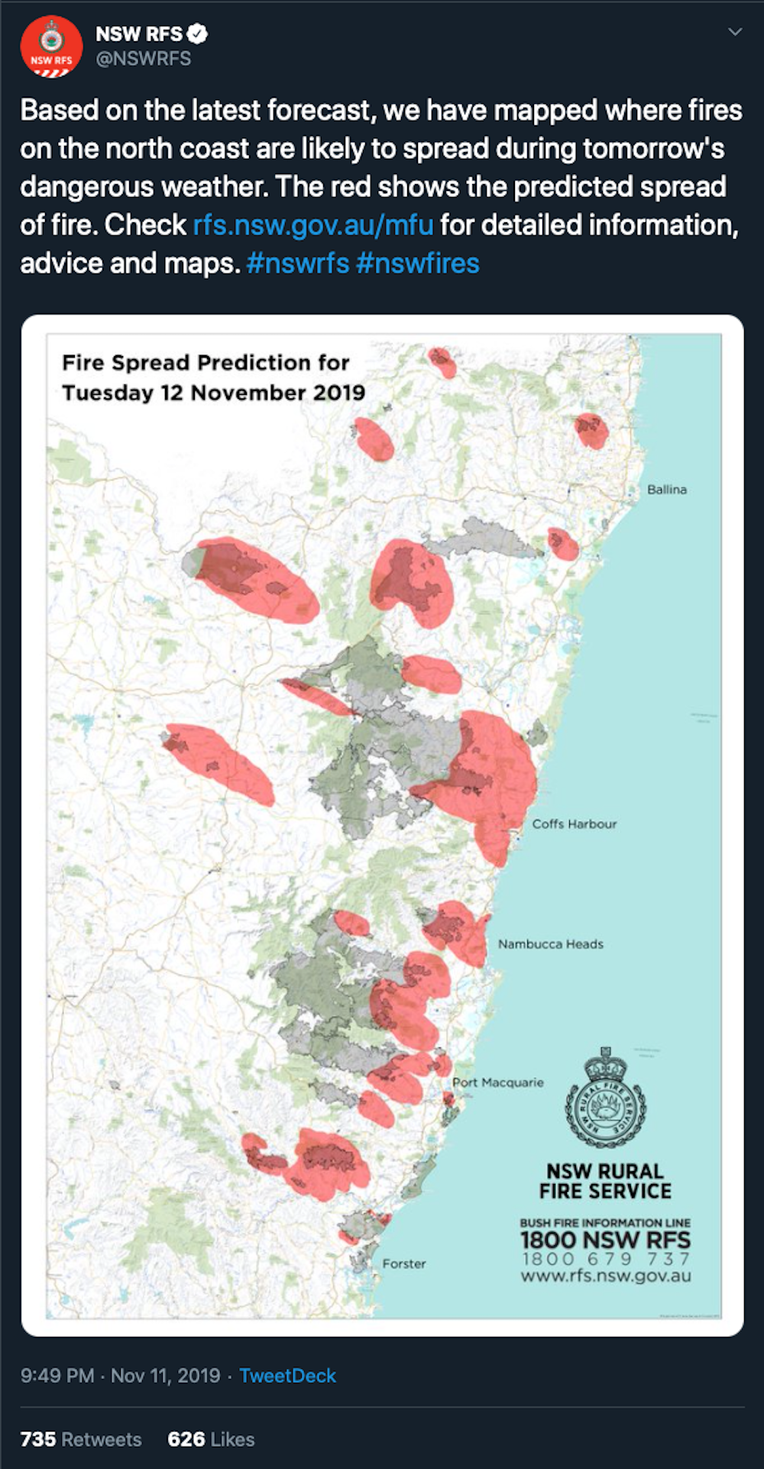Bound to Predict
From the Series: Firestorm: Critical Approaches to Forest Death and Life
From the Series: Firestorm: Critical Approaches to Forest Death and Life

The 2019–2020 “Black Summer” bushfire season that affected southeast Australia has, like the COVID-19 pandemic, been frequently framed in terms of its unprecedented dimensions. To paraphrase one summary, the vastness of the burnt areas, the number of extreme pyroconvective events, and the radiative force of the fires “were all unmatched in the historical record.” Approximately twelve million hectares, including almost a quarter of the regions’ temperate forests, were burned. Thirty-three human and three billion nonhuman lives were lost directly, over four hundred people died prematurely due to smoke exposure, and more than three thousand houses were destroyed. Social media became a storm of questions, conjecture, warnings, bulletins, and maps of the fires’ possible future paths. The fires also produced an immense archive of evidence and reports from the five state and federal inquiries subsequently convened to investigate their origins and impacts.
As it unfolded, the season provoked public questioning about whether its extraordinary proportions represented a “new normal.” Had Australia reached a transition where, perhaps, such seasons would be the rule? While conservative politicians declared that bushfires were natural and normal, thousands marched in state capitals to protest the inadequacy of the government’s response, many wearing masks to mitigate the toxic haze. The protestors’ banners called for urgent action (“our house is on fire”) and, like the scientific consensus, connected the fires to climatic change (“climate action is fire prevention”). Elsewhere, commentators speculated about the implications of climatic step changes. Were fire agencies, established to manage Holocene hazards, able to cope with this Anthropocenic disaster? Were the scientific models used to predict fire behaviors “not coping” with these infernos?
Within the emergency management infrastructures tasked with managing the fires, however, I encountered little sense of paradigm shifts. People were tired and emotionally stretched. Control centers were cramped for space, and meeting agendas cramped for time, as an increasing number of agencies and individuals were enrolled into the seemingly infinite tasks of incident response and recovery. Tempers were shorter and shifts were longer than usual. Occasionally, to cut the tension, some would joke that the situation was “SNAFU” (or, “situation normal, all fucked up”). But, within these noisy offices the mood was nonetheless generally managerial and calm. This crisis would set records, people explained to me, but it was within the frame of reference. Like previous seasons, it was, day-by-day, domesticated through the established processes of “command and control.”
The interpretive split between those inside and outside this managing infrastructure is produced, in part, by the social distance between them, and is illustrated by the particular unit I shadowed through the season. The role of the Predictive Services unit and its experts, known as Fire Behavior Analysts (FBANs, pronounced “eff-bans”), is to provide other emergency managers with predictions about how possible and existing fires will behave. This often takes the form of verbal advice and slide packs, however the central outputs FBANs produce are topographical maps that show—in vivid isochrones—the path a real or imagined fire may take over the next six to twenty-four hours (see Figure 1). Using some mixture of spreadsheets, simulators, GIS software, printed maps, and colored markers, FBANs sketch these disposable prophecies of fiery futures.

As Daniel May and I have argued (Neale and May 2020), FBANs have to navigate several tensions inherent to their role, often described in terms of striking a balance between “art” and “science.” How much of their uncertainty should they disclose to their users? How much of the necessary improvisation is too much? FBANs, I have found, are not concerned about the adequacy of their models for auguring the 2019–2020 fires (cf. Petryna 2018). They have learned to work with the tools available—combining imagination and doubt, coordinating uncertain inputs and tentative outputs—to illustrate any fire’s possibilities. As FBANs often explained, an analysis is not “good” because it accurately depicts what subsequently occurs; rather, its value is determined by its utility in others’ decisions. “It doesn’t matter if the map is ‘wrong’ about what happened,” as one FBAN said, “is it helpful?”
Such explanations, and my experience as an FBAN trainee, have led me to understand it as a practice of both prediction and divination. These terms are sometimes synonyms, however anthropologists have often found cause to distinguish between prophetic practices such as scapulimancy, astrology, or “poison oracles” and scientific practices like meteorology. Both divination and prediction provide impersonal or “extrinsic” mechanisms to articulate the future, however, as Elsie Clews Parsons argued (1942, 339), whereas “divination can never be checked upon by reality, predictive science allows of constant checking.” Divinations “reveal hidden realities” to provoke interest and intervention (Bear 2015, 30), and thereby distribute responsibility between oracle, author, process, and audience. If an FBAN’s omens do not come to pass, it could well be because others paid attention to their map; others saw the divination and interceded with firefighters and aircraft to suppress its emergence in reality.
For FBANS, one of the major novelties of the 2019–2020 fires was that their maps began circulating outside emergency management agencies, through news media and social media. For the first time, and with little forethought, their colorful polygons of risk were in public view (see Figure 2). Among the panic of devastation and evacuations, and the digital noise of thousands of retweets and comments online, were these maps being read as truth events, divinations, or something else? Subsequent inquiries have pushed for the expansion of predictive services, but what remains unclear, and little discussed, is whether the distribution of such forecasts present opportunities to alter the politics of fire. In this combustible corner of a flammable continent, will the increasing frequency and intensity of bushfires lead to changes in who controls and participates in the means of (predictive) production? The “new normal,” heralded by landmark seasons in Australia and elsewhere, could be one where the tools and techniques agencies use to anticipate the future are finally democratized.

Bear, Laura. 2015. “Capitalist Divination: Popularist Speculators and Technologies of Imagination on the Hooghly River.” Comparative Studies of South Asia, Africa and the Middle East 35, no. 3: 408–23.
Neale, Timothy, and Daniel May. 2020. “Fuzzy Boundaries: Expertise and Culture in Bushfire Prediction.” Social Studies of Science 50, no. 6: 837–59.
Parsons, Elsie Clews. 1942. “Anthropology and Prediction.” American Anthropologist 44, no. 3: 337–44.
Petryna, Adriana. 2018. “Wildfires at the Edges of Science: Horizoning Work amid Runaway Change.” Cultural Anthropology 33, no. 4: 570–95.